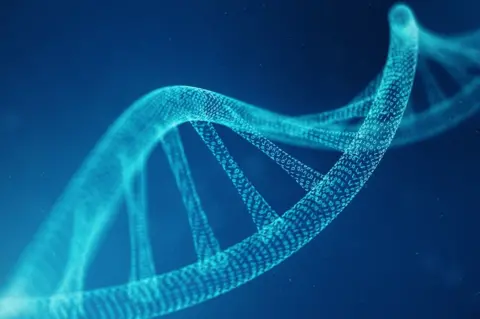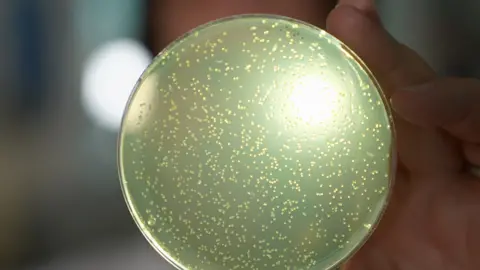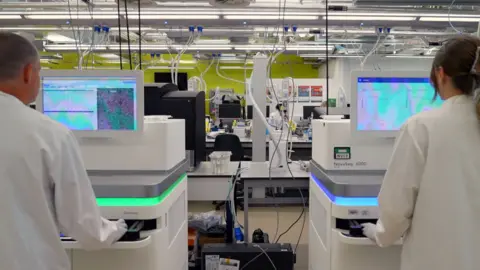Scientific video
The work began in a controversial project to create building blocks of human life from zero, in what is believed to be the first world.
The research was taboo so far due to concern, it could lead to designer babies or unforeseen changes for future generations.
But now the greatest medical charity in the world, in goodness in goodness, has given the initial 10m to start the project and says that it has the potential to make more than harm by accelerating treatment for many incurable diseases.
Dr Juliana Sales, MRC Laboratory Molecular Biology in Cambridge, which is part of the project, said BBC is news, research was the next hearth in biology.
“The sky is the limit. We look at therapies that will improve the lives of people like age, it will lead to healthier aging with less diseases as they become older.
“We want us to use this approach to creating disease-resistant cells can use to repopulate damaged bodies, for example in the liver and heart, even the immune system,” he said.
But critics fear that research opens the way for unscrupulous researchers who want to create improved or modified people.
Dr. Pat Thomas, director of the GM campaign group, said, “We like to think that all scientists are doing well, but science can be refused to damage and warfare.”
The details of the project are given to the news of the BBC at 25. Anniversary of the completion of the human genome project, which mapped molecules in the human DNA and is also largely funded to a large extent.
 Getti images
Getti imagesEach cell in our body contains a molecule called DNA that carries the genetic information that is needed. The DNA was built of only four many smaller blocks called A, G, C and T, which are repeated again and over again in different combinations. Amazing to contain all the genetic information that physically makes us who we are.
The human genome project has enabled scientists to read all human genes such as bar code. The new working work, is called the Synthetic Human Genome project, potentially takes this giant leap forward – it will allow researchers that not only read the DNA molecule, but to create parts of it – maybe one day all that – molecules.
 BBC News
BBC NewsThe first goal of the scientist is to develop ways of building ever major blocks of human DNA, to the point when they have built human chromosome. They contain genes that regulate our development, repair and maintenance.
They can then be studied and experimented to learn more about how genes and DNA regulate our bodies.
Many diseases occur when these genes go wrong, the studies can lead to better treatments, according to Prof. Mateju Hurces, director of the Singer’s subsidiary, which the sequence was sequenced most of the human genome.
The “construction DNA from scratches allows us to test how DNA really works and examine new theories, because we can really really only make the DNA setting that already exists in DNA, which already exists in live systems.”
 BBC News
BBC NewsThe work of the project will be limited to testing pipes and dishes and there will be no attempt to create synthetic life. But technology will give researchers unprecedented control over human life systems.
And although the medical benefit is hunting project, there is nothing to break the unscrupulous scientists of technology abuse.
They, for example, could try to create biological weapons, reinforced people or even creatures, according to Prof Bill Earnshaw, a very respectable genetic scientist at Edinburgh, who designed a method for creating artificial human chromosomes.
“Genie is out of the bottle,” he said he said BBC News. “We could now have a set of limitations, but if an organization that has access to appropriate machines decided to start synthes anything, I don’t think we could stop them”
MS Thomas concerns how technology will commercialize health companies that develop treatments that appear from research.
“If we manage to create synthetic parts of the body or even synthetic people, who owns them. And who is the owner of these creations?”
Given the potential abuse of technology, the question for welcome is why they decided to finance it. The decision is not easy to do, according to Dr. Tom Collins, who gave funds.
“We wondered what the price of inactivity was like,” he told the news of the BBC.
“This technology will be developed one day, so we are doing this now at least we try to do this as a responsible way and fully oppose ethical and moral issues.”
A special program for social sciences found in tandem with scientific development of the project and guides Prof. Joy Zhang, Sociologist at the University of Kent.
“We want to get the views of experts, social scientists, and especially the public about how to relate to technology and how it can be useful for them and impositions that are issues and concerns,” she said.






